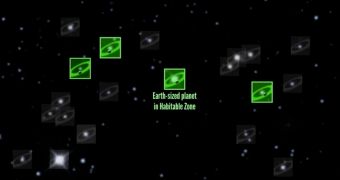The NASA Kepler Space Telescope finally completed its primary mission, which was to provide an estimation of the number of potentially-habitable planets in our galaxy. Using data collected by this mission, astronomers determined that as much as 20 percent of stars in the Milky Way have Earth-sized exoplanets orbiting them.
The work was conducted by investigators from the University of Hawaii in Manoa and the University of California in Berkeley. The team used data from the Kepler telescope and the W. M. Keck Observatory to arrive at this number. Estimates show that the Milky Way has around 100 billion stars.
Details of the investigation were published in the November 4 issue of the esteemed journal Proceedings of the National Academy of Sciences. The research may usher in a new era in astronomy, as future missions that will succeed Kepler will be better capable of imaging these distant worlds.
An important thing to note here is that not all extrasolar planets the size or mass of Earth may support life. In order for this to be possible, the worlds have to orbit their parent stars inside the habitable zone, an area around each star where temperatures are just right to support liquid water.
Similarly, not all planets in their stars' habitable zones can support life. Some of these worlds may have very dense atmospheres that promote extreme global warming phenomena. This means that surface temperatures could reach several times those on Earth, making life as we know it impossible.
Other worlds “may have rocky surfaces that could harbor liquid water suitable for living organisms. We don't know what range of planet types and their environments are suitable for life,” explains Geoffrey Marcy, a professor of astronomy at UC Berkeley.
“[...] when you look up at the thousands of stars in the night sky, the nearest sun-like star with an Earth-size planet in its habitable zone is probably only 12 light years away and can be seen with the naked eye. That is amazing,” adds Erik Petigura, a graduate student at the university.
The very large number of Earth-like planets discovered by Kepler will make future space exploration missions a lot simpler. Given the abundance of such worlds in the Milky Way, future telescopes are sure to find items of interest to study for prolonged periods of time.
Most exoplanets found with Kepler and Keck orbited around K stars, which are smaller and cooler than the Sun. However, the team suggests that its estimates can be easily extrapolated to G stars, such as our own. Consequently, the number of potentially-habitable worlds could increase even more in the future.

 14 DAY TRIAL //
14 DAY TRIAL //